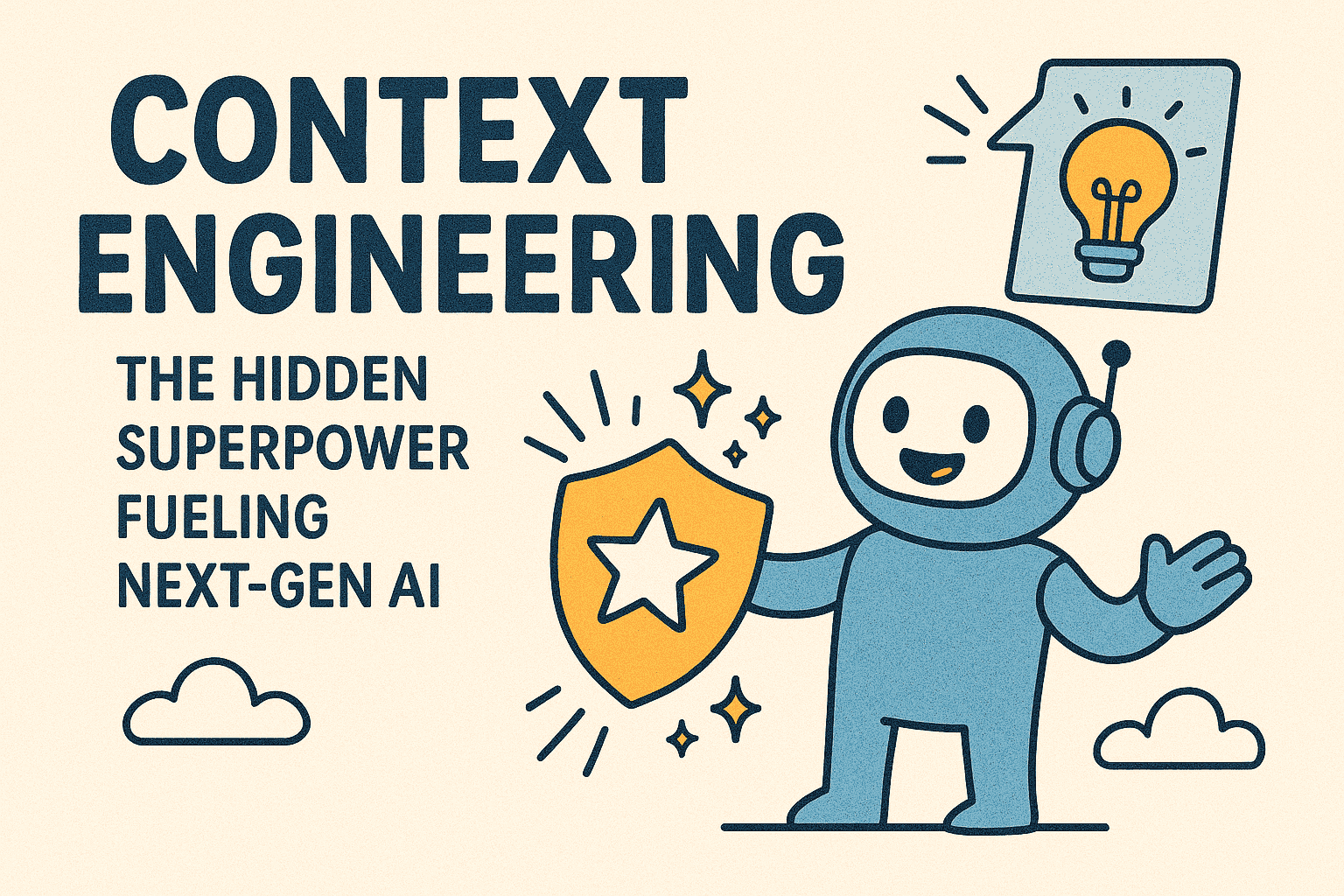Let’s set the scene. You’ve wrangled your first large language model (LLM) demo. The prompts are clever, the model’s output dazzles in a narrow script — but suddenly, boom, reality hits: customers want actual AI workflows, not magic tricks. The gap between flashy prompt hacks and scalable production AI systems yawns wide. Enter: context engineering. This is where artificial intelligence gets real — and where the fun begins.
Prompt Engineering vs Context Engineering: What’s the Difference?
Prompt engineering is like learning stage magic: crafting the exact instructions users see and use. It’s customer-facing and focuses on prompt design, wording, and clarity.
Context engineering is the backstage wizardry for developers. It builds and manages the entire AI context window — including user history, business logic, relevant documents, tooling, and workflow state — for every LLM call.
Prompt engineering focuses on crafting user-visible prompts, concentrating on precise text and commands with one-off refinements. It is primarily customer-facing, as it shapes the exact messages that end-users interact with. In contrast, context engineering acts as the invisible but essential system plumbing behind the scenes. It emphasizes the overall architecture, data flow, and logical orchestration of the AI system, taking a comprehensive approach to AI design rather than isolated prompt tweaks.
Context engineering is primarily developer- and system-facing, involving end-to-end management and integration that ensure the AI functions reliably and intelligently at scale.
Think of prompt engineering as picking the right sword, context engineering as building the whole armory and training your army on wielding it.
Why Context Engineering Is Critical for AI Success
Industry data and technical research demonstrate that advanced context engineering techniques deliver measurable benefits for AI applications:
- Boosts factual accuracy by 10–40% by dynamically assembling the right context inline for each query.
- Reduces hallucinations by 20–60%, increasing AI response reliability and trustworthiness.
- Doubles task completion speed in multi-step or conversational workflows through effective memory and state management.
- Adds essential guardrails that cut “wild” AI outputs by over 30%, improving safety and compliance in sensitive contexts.
The real power is how context engineering optimizes the quality and relevance of AI input data, not just the quantity.
Key Context Engineering Techniques for Developers
- Dynamic context assembly: Build context windows on the fly, mixing recent user history, domain-specific knowledge, and real-time data.
- Retrieval Augmented Generation (RAG): Integrate LLMs with external databases, knowledge bases, and documents to supply current and factual information, increasing precision by up to 35%.
- Memory chaining and state management: Enable AI agents to remember past interactions for more coherent multi-turn conversations.
- Tool and API orchestration: Seamlessly incorporate external tools and plugins, improving automation accuracy and task coverage.
- Adaptive guardrails: Implement content filters, policy enforcement, and error correction to keep AI aligned and safe.
Panto AI and Context Engineering
A standout example of context engineering in action is Panto AI, an AI-powered code review assistant. Panto AI enriches code reviews by automatically integrating business context from Jira and Confluence, along with related pull request discussions and security checklists.
This context-driven approach ensures code feedback is not only technically accurate but aligned with business priorities, helping over 500 developers avoid costly mistakes and improve productivity. Panto AI exemplifies how context engineering is the backbone of modern, scalable AI applications.
Building Scalable, Reliable AI Systems Through Context Engineering
Scaling AI systems requires more than better prompts; it demands architecting robust context orchestration layers to:
- Manage and version prompt templates dynamically.
- Assemble diverse context elements precisely according to workflow needs.
- Enforce safety, compliance, and usage policies automatically.
- Provide metrics on context coverage, recall rate, and token efficiency to optimize performance.
Mastering these elements is the key competitive advantage in AI product development today.
Conclusion: Why Context Engineering Is the Future of AI Design
Prompt engineering crafts the message users see. Context engineering crafts the entire AI experience from the ground up.
Those who master context engineering build AI agents and applications that are accurate, safe, efficient, and aligned with real-world needs. Platforms like Panto AI demonstrate how incorporating those exact principles translates directly into business value — faster development cycles, higher code quality, and better team collaboration.
If you want to build AI systems that deliver both magic and reliability at scale, invest in context engineering first — because that’s truly where the magic happens.
Originally published at https://www.getpanto.ai.






